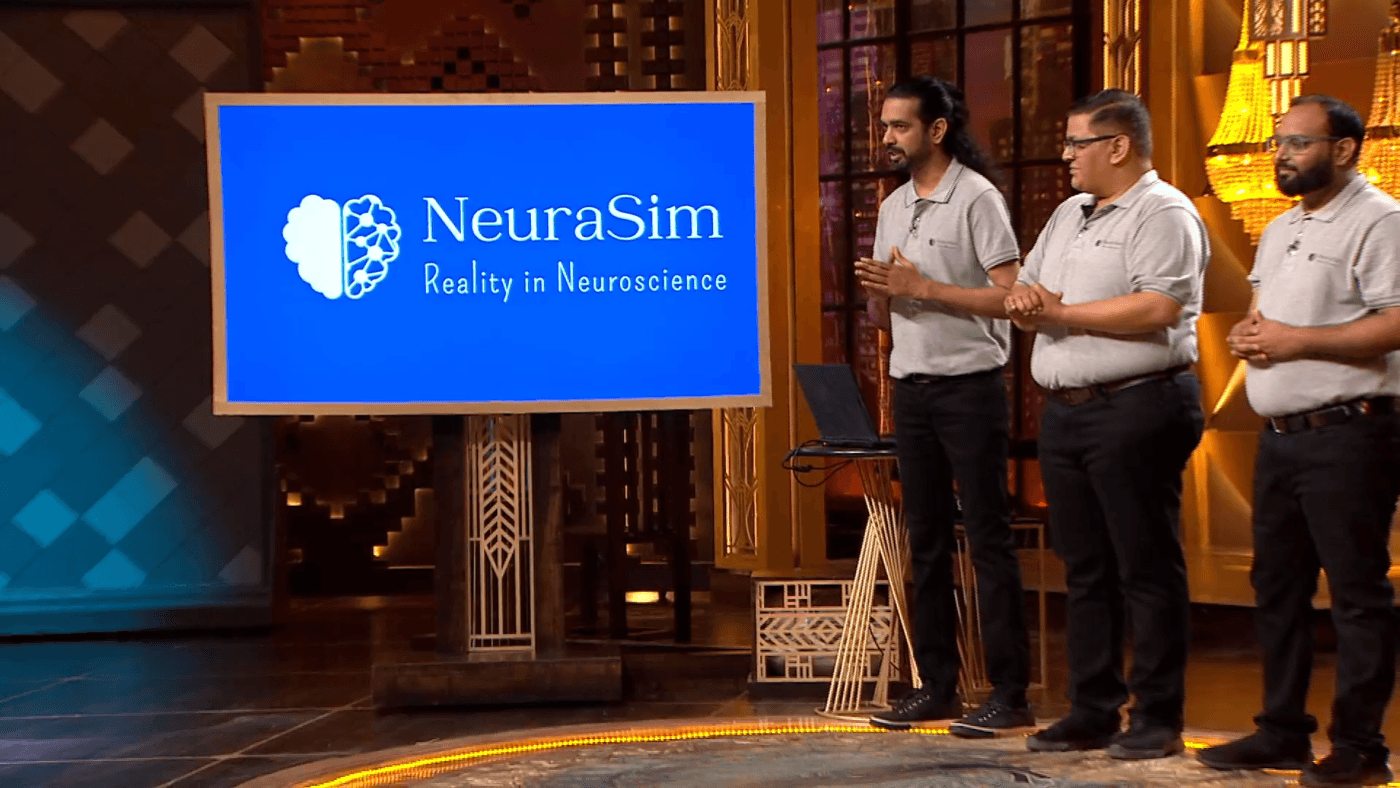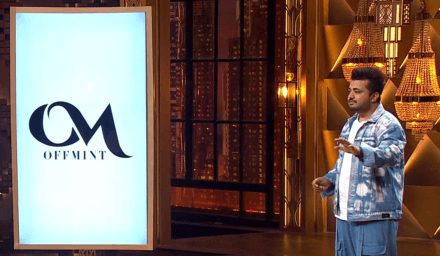NeuraSim Shark Tank India Episode Review
Website Information
- Website:- NeuraSim
- Build on JavaScript frameworks- React, Next.js 15.1.7, GSAP
- Poor SEO Performance, SEO improvement is needed.
- ORGANIC TRAFFIC: 0 visitors per month.
Founders
- NeuraSim was founded by Dr. Ramesh S Ve and Mr. Maciej Kossowski.
- Their commitment to quality, creativity, and customer satisfaction drives the company’s mission to innovate in the field of vision therapy.
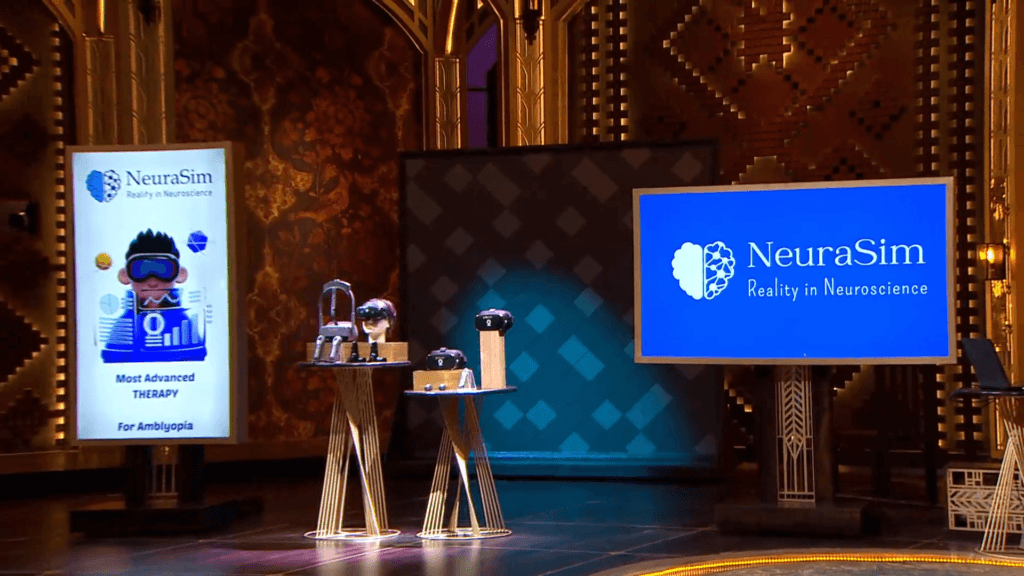
Brand Overview
- NeuraSim is a Karnataka-based startup specializing in virtual reality technology for healthcare treatment.
- Their flagship product, Bee Vee™, is designed to provide immersive therapy for various vision-related disorders.
- NeuraSim focuses on utilizing virtual reality to enhance healthcare treatments, specifically targeting conditions like amblyopia (lazy eye), squint eyes, headaches, and eye movement disorders.
- The company aims to revolutionize vision therapy through its CE-certified product, Bee Vee™.
Shark Tank India Appearance and Ask
- NeuraSim sought an investment of ₹1 crore for 8% equity, valuing the company at ₹12.5 crore.
- The founders presented their innovative approach to vision therapy and highlighted the potential impact of their product.
Season and Episode Air Date
- Season: 04
- Episode: 28
- Episode Air Date: Wednesday, 12 February 2025
Product Overview
- Bee Vee™ is an immersive virtual reality therapy designed to treat amblyopia and other vision disorders effectively.
- The product leverages gamified experiences to engage users in their treatment, making it more appealing and potentially more effective than traditional methods.
Investor Reactions
- The sharks were intrigued by NeuraSim’s innovative technology but ultimately decided against investing.
- While some sharks expressed concerns about the product’s readiness and market viability, others acknowledged the potential of the technology in addressing specific health issues.
Customer Engagement Philosophy
- NeuraSim aims to create an engaging user experience through its virtual reality platform, making therapy enjoyable and accessible.
- The company focuses on educating potential users about the benefits of VR therapy for vision correction.
Product Highlights
- Immersive Therapy: Offers a unique gamified experience for users undergoing vision therapy.
- Targeted Conditions: Specifically designed to treat amblyopia, squint eyes, headaches, and eye movement disorders.
- CE-Certified: The product meets European safety standards, enhancing its credibility in the healthcare market.
Future Vision
- With guidance from industry experts following their appearance on Shark Tank India, NeuraSim aims to refine its product offerings and expand its market reach.
- The company is focused on further developing its technology and exploring partnerships within the healthcare sector to enhance accessibility to its therapies.
Deal Finalized or Not
- NeuraSim did not secure a deal during their appearance on Shark Tank India.
- However, they received valuable mentorship from the panel of sharks, which could aid in their future growth and development.
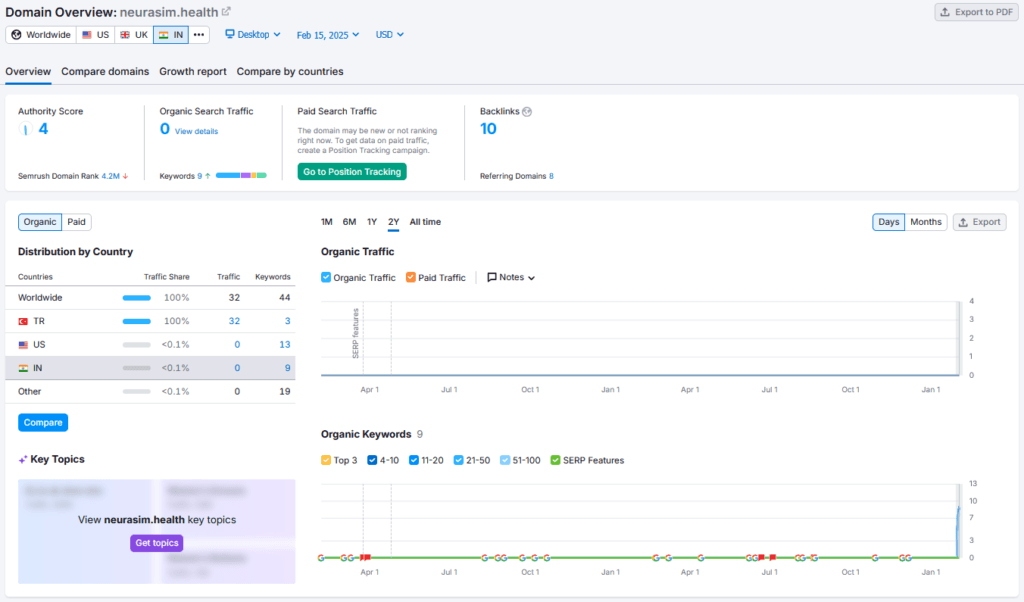
| Category | Details |
|---|---|
| Website Information | |
| Website Name | NeuraSim |
| Technology Stack | React, Next.js 15.1.7, GSAP |
| SEO Performance | Poor (needs improvement) |
| Organic Traffic | 0 visitors per month |
| Founder Information | |
| Founders | Dr. Ramesh S Ve and Mr. Maciej Kossowski |
| Mission | Innovate in vision therapy using virtual reality |
| Brand Overview | |
| Brand Name | NeuraSim |
| Location | Karnataka, India |
| Industry | Healthcare (VR-based vision therapy) |
| Flagship Product | Bee Vee™ |
| Focus Areas | Amblyopia (lazy eye), squint eyes, headaches, and eye movement disorders |
| Certification | CE-Certified |
| Shark Tank India Appearance | |
| Investment Ask | ₹1 crore for 8% equity (₹12.5 crore valuation) |
| Season | 04 |
| Episode | 28 |
| Episode Air Date | Wednesday, 12 February 2025 |
| Outcome | No deal secured, but received valuable mentorship |
| Product Overview | |
| Product Name | Bee Vee™ |
| Functionality | VR therapy for vision disorders |
| Unique Approach | Gamified therapy for better engagement and effectiveness |
| Investor Reactions | |
| Overall Response | Intrigued by the technology but hesitant about market readiness |
| Concerns | Product readiness and market viability |
| Customer Engagement Philosophy | |
| Approach | Educating users about the benefits of VR therapy |
| Accessibility | Making therapy enjoyable and engaging through gamification |
| Product Highlights | |
| Key Benefits | Immersive and gamified therapy for vision disorders |
| Target Conditions | Amblyopia, squint eyes, headaches, and eye movement disorders |
| Certification | CE-certified for safety and effectiveness |
| Future Vision | |
| Growth Plan | Enhance product offerings and expand market reach |
| Industry Partnerships | Collaborate with healthcare providers for better accessibility |
| Business Potential in India | |
| Market Size (2023) | $177.8 million (₹1,475 crore) |
| Projected Growth (2030) | $1.4 billion (₹11,620 crore) with a CAGR of 43.8% |
| Growth Drivers | Increased VR adoption in healthcare, remote consultations, and medical training |
| Total Addressable Market (TAM) | |
| Global Healthcare VR Market | Expected to grow from $4.19 billion (2024) to $29.13 billion (2029) |
| India’s Share | Significant growth expected due to rising investments in healthcare tech |
| Target Audience & Demographics | |
| Age Group | 5-60 years (children and adults with vision disorders) |
| Geographic Focus | Urban areas with advanced healthcare access |
| Income Level | Middle to upper-middle-class families |
| Marketing Strategy | |
| Content Marketing | Educational content, case studies, and user testimonials |
| Digital Marketing | Improve SEO, leverage social media, and run targeted ad campaigns |
| Distribution Strategy | |
| Healthcare Partnerships | Collaborate with hospitals and clinics |
| Direct-to-Consumer | Online platform for patient education and therapy access |
| Advantages | |
| USP | Innovative VR-based vision therapy with gamification |
| Certification | CE-certified, ensuring credibility in healthcare |
| Challenges | |
| SEO Performance | Needs improvement for better online visibility |
| Market Readiness | Concerns about product adoption and integration in healthcare |
| Reasons for Potential Success | |
| Growing VR Adoption | Increasing acceptance of VR in healthcare treatments |
| Niche Market Focus | Limited competition in VR-based vision therapy |
| Mitigation Strategies | |
| SEO & Marketing | Invest in SEO and digital marketing efforts |
| Product Refinement | Gather feedback from early users to enhance effectiveness |
| Future Business Roadmap | |
| Short-Term Goals (1 Year) | Improve SEO, secure healthcare partnerships for pilot programs |
| Medium-Term Goals (2-3 Years) | Expand product line, reach ₹10 crore revenue target |
| Long-Term Goals (5 Years) | International expansion, achieve ₹100 crore valuation |
NeuraSim Shark Tank India Business Plan
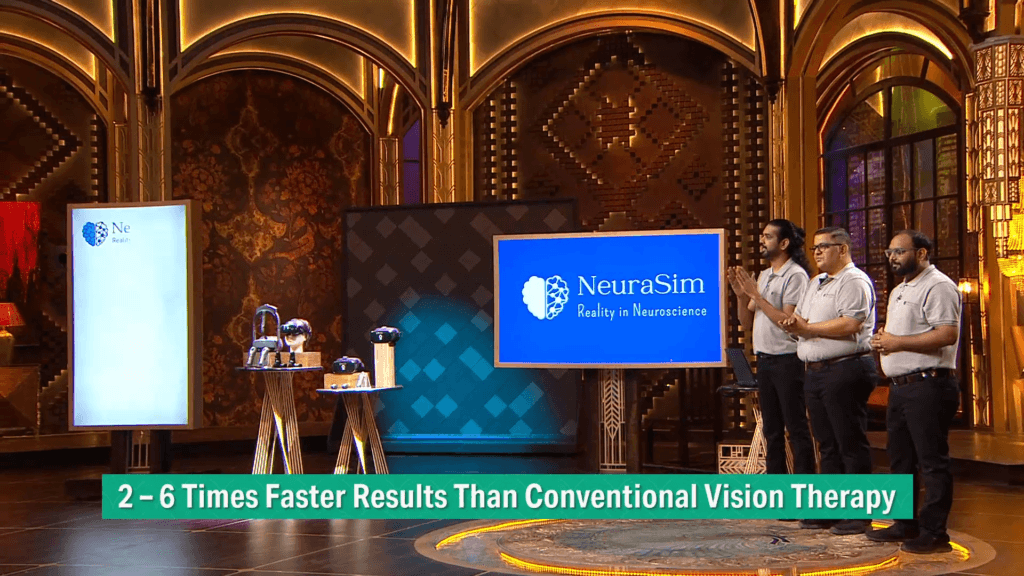
Business Potential in India
- Market Size: The virtual reality (VR) in healthcare market in India generated approximately $177.8 million in revenue in 2023 and is projected to reach $1.4 billion by 2030, growing at a CAGR of 43.8%.
- Growth Drivers: Increased adoption of VR for treatments, remote consultations, and training in medical education are key factors driving market expansion.
Total Addressable Market (TAM)
- Healthcare VR Market: The global market for VR in healthcare is expected to grow from $4.19 billion in 2024 to $29.13 billion by 2029, with a CAGR of 48.3%.
- India’s Share: As a rapidly developing market, India is expected to capture a significant portion of this growth due to rising investments in healthcare technology.
Ideal Target Audience and Demographics
- Target Audience: Healthcare providers, including hospitals and clinics, as well as patients suffering from vision-related disorders such as amblyopia and squint eyes.
- Demographics:
- Age: 5-60 years (targeting children and adults)
- Geographic Focus: Urban areas with access to healthcare facilities
- Income Level: Middle to upper-middle-class families who can afford advanced treatments.
Marketing Strategy
- Content Marketing: Create educational content that highlights the benefits of VR therapy for vision disorders. Use case studies and testimonials from early users to build credibility.
- Digital Marketing:
- Improve SEO performance to increase organic traffic from the current 0 visitors per month.
- Leverage social media platforms (LinkedIn, Facebook, Instagram) to reach healthcare professionals and potential patients.
- Implement targeted online advertising campaigns focusing on parents of children with vision issues.
Distribution Strategy
- Partnerships with Healthcare Providers: Collaborate with hospitals and clinics to integrate Bee Vee™ into their treatment offerings.
- Direct-to-Consumer Sales: Develop an online platform for patients and caregivers to learn about the product and access therapy sessions.
Advantages
- Innovative Technology: NeuraSim offers a unique product that combines gaming elements with therapeutic exercises, enhancing patient engagement.
- CE Certification: The CE certification of Bee Vee™ adds credibility and trustworthiness in the healthcare market.
Challenges
- SEO Performance: Current lack of organic traffic indicates a need for improved online visibility.
- Market Readiness: Some investors expressed concerns about the product’s readiness for widespread adoption.
Reasons for Potential Success
- Growing Demand for VR Solutions: Increasing acceptance of VR technology in healthcare creates a favorable environment for NeuraSim’s offerings.
- Focus on Vision Therapy: Addressing specific conditions like amblyopia fills a niche market with limited competition.
Mitigation Strategies
- Enhanced Marketing Efforts: Invest in SEO and digital marketing to improve online presence and attract visitors.
- Feedback Loop with Early Users: Gather feedback from initial users to refine the product before the broader market release.
Future Business Roadmap
Short-Term Goals (1 Year):
- Increase organic traffic from 0 to at least 500 visitors per month through improved SEO strategies.
- Establish partnerships with at least five healthcare providers for pilot programs using Bee Vee™.
Medium-Term Goals (2-3 Years):
- Expand product offerings based on user feedback and technological advancements.
- Achieve revenue targets of ₹10 crore by increasing sales through partnerships and direct-to-consumer channels.
Long-Term Goals (5 Years):
- Position NeuraSim as a leader in VR therapy solutions within India, aiming for international expansion into markets like Europe and North America.
- Reach a valuation of ₹100 crore by diversifying into other therapeutic areas using VR technology.
By focusing on these strategies, NeuraSim can effectively navigate challenges while capitalizing on the growing demand for innovative healthcare solutions.

